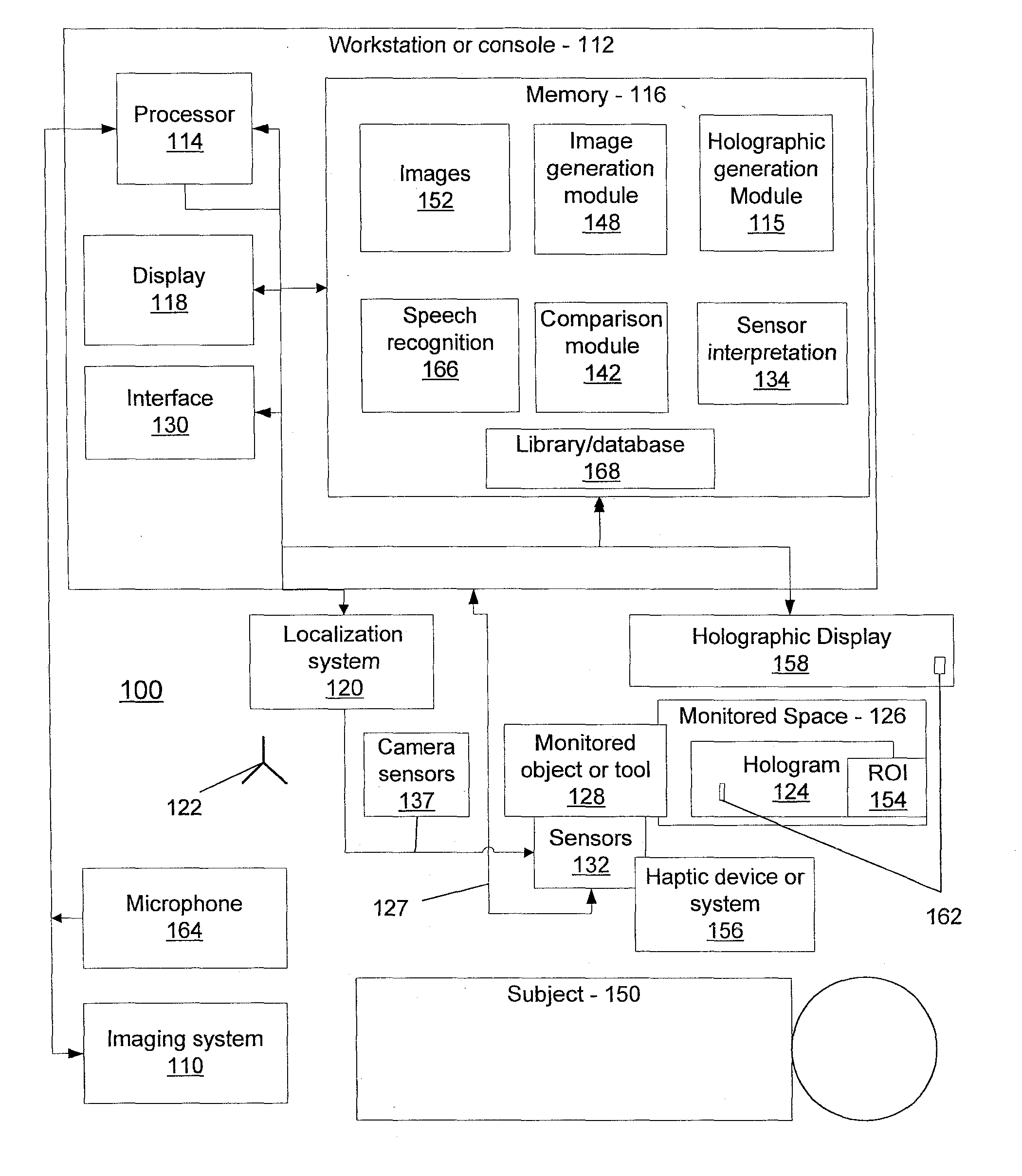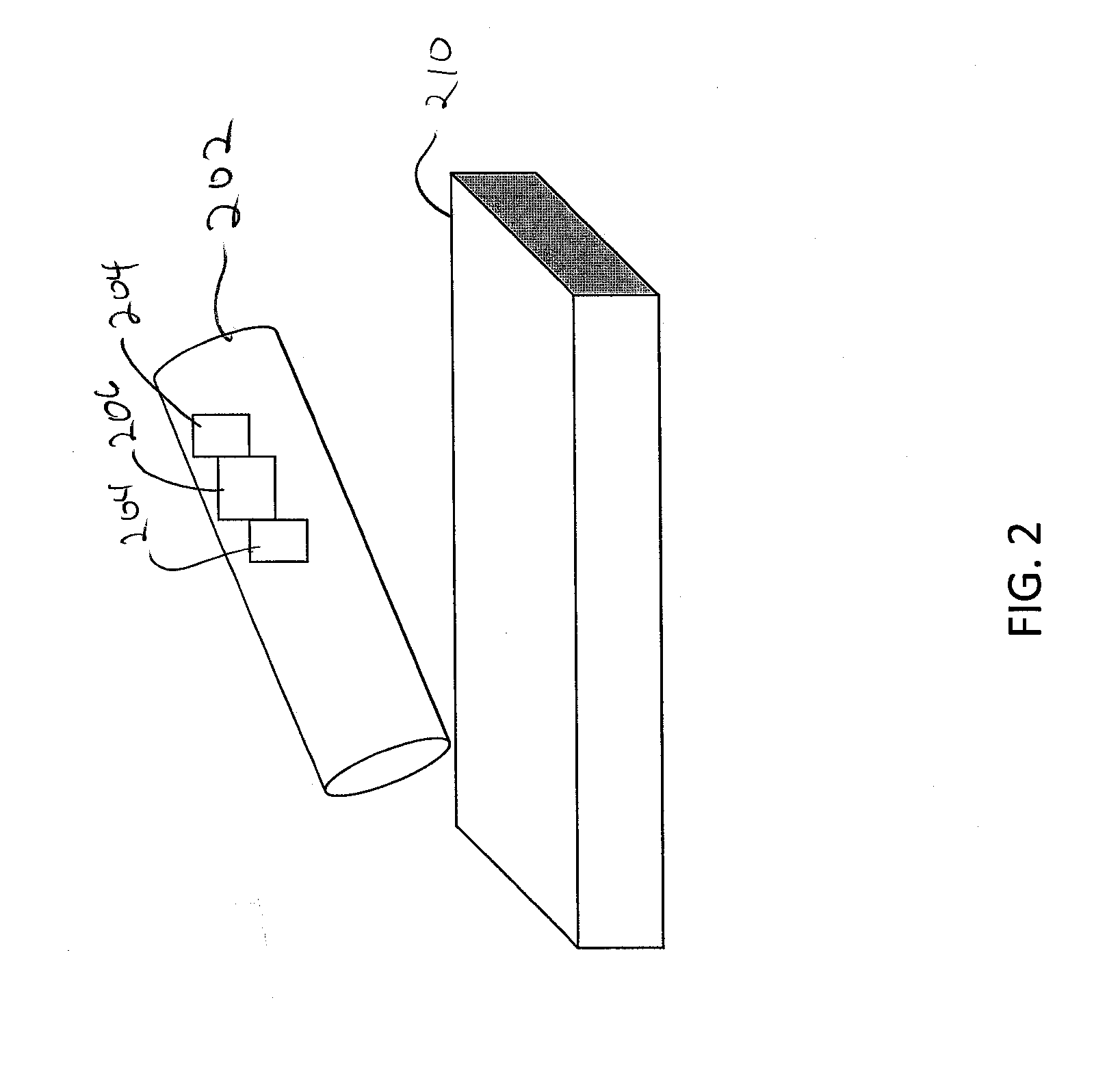Holographic user interfaces for medical procedures
a user interface and medical technology, applied in the field of medical systems, devices and methods, can solve the problems of limiting the ability to render high-quality images using this technology, affecting the user experience,
- Summary
- Abstract
- Description
- Claims
- Application Information
AI Technical Summary
Benefits of technology
Problems solved by technology
Method used
Image
Examples
Embodiment Construction
[0022]In accordance with the present principles, systems, devices and methods are described which leverage holographic display technology for medical procedures. This can be done using 3D holographic technologies (e.g., in-air holograms) and real-time 3D input sensing methods such as optical shape sensing to provide a greater degree of human-data interaction during a procedure. Employing holographic technology with other technologies potentially simplifies procedure workflow, instrument selection, and manipulation within the anatomy of interest. Such exemplary embodiments described herein can utilize 3D holographic displays for real-time visualization of volumetric datasets with exemplary localization methods for sensing movements in free space during a clinical procedure, thereby providing new methods of human-data interaction in the interventional suite.
[0023]In one exemplary embodiment, 3D holography may be used to fuse anatomical data with functional imaging and “sensing” inform...
PUM
 Login to View More
Login to View More Abstract
Description
Claims
Application Information
 Login to View More
Login to View More - R&D
- Intellectual Property
- Life Sciences
- Materials
- Tech Scout
- Unparalleled Data Quality
- Higher Quality Content
- 60% Fewer Hallucinations
Browse by: Latest US Patents, China's latest patents, Technical Efficacy Thesaurus, Application Domain, Technology Topic, Popular Technical Reports.
© 2025 PatSnap. All rights reserved.Legal|Privacy policy|Modern Slavery Act Transparency Statement|Sitemap|About US| Contact US: help@patsnap.com



